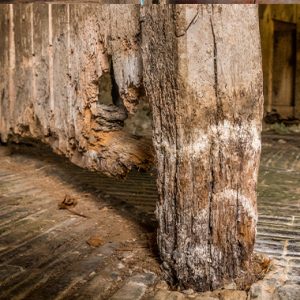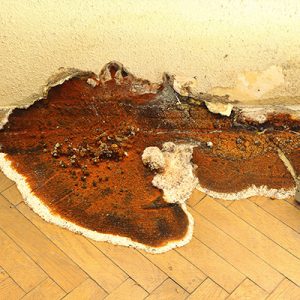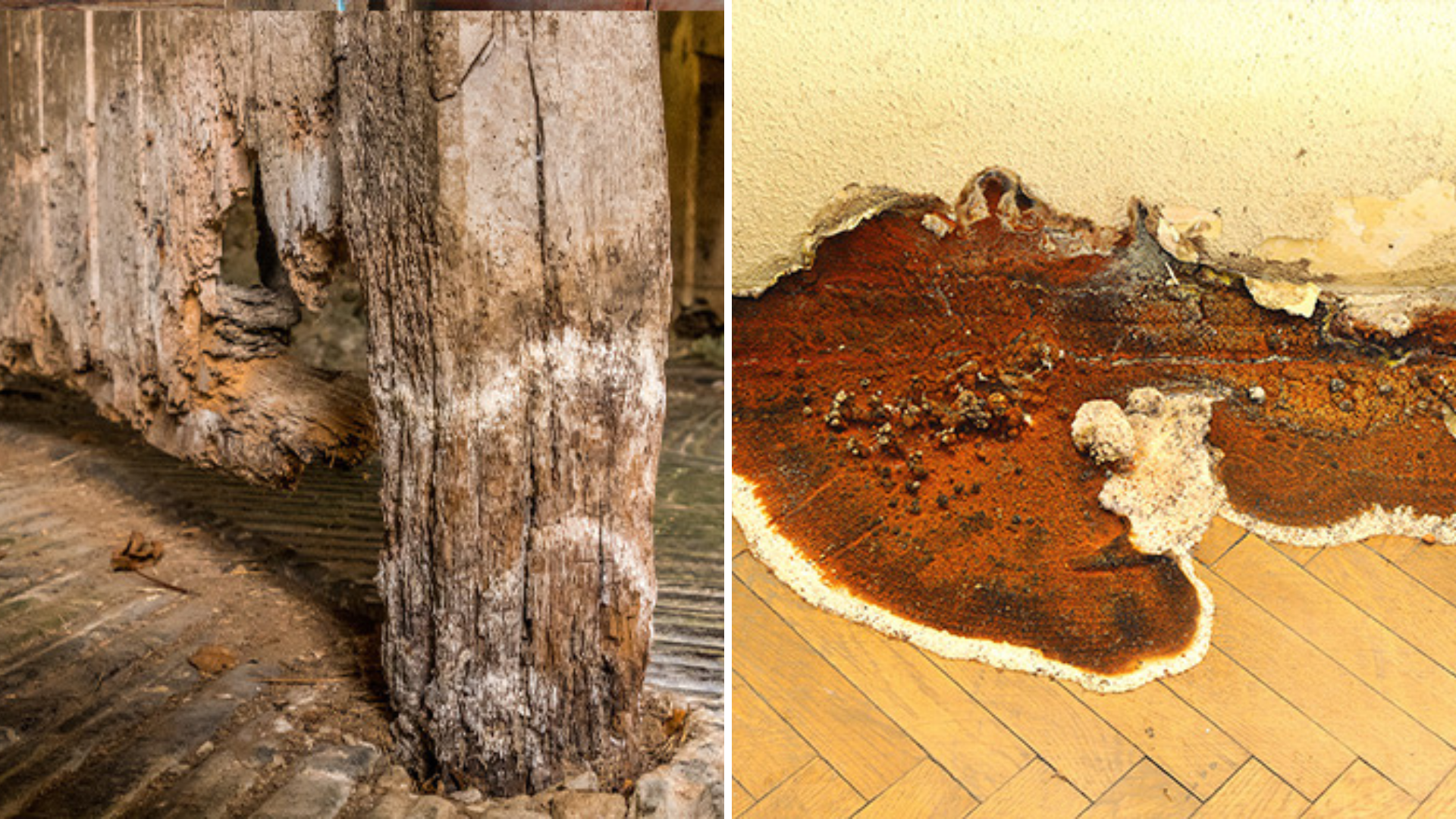Both wet rot and dry rot can affect the timbers in buildings of all ages. And both wet rot and dry rot are caused by fungal decay in damp wood, but that’s where the similarities end.
Wet rot
Excess moisture in your home’s timbers can cause the fungus of wet rot to grow. The most common fungus is the cellular Coniophora Puteana, but Poria Vaillantii (the pore, or mine fungus), may also be present. These fungi prefer moisture levels of around 30% – 50% and cause the timbers to become soft and flaky. The first tell-tale signs of wet rot include darkened wood, indicating high levels of dampness, but the wood feels spongy when pressed. The wood becomes flaky or crumbly and appears to have shrunk and you’ll notice a musty smell. If you see spores of fungal growth, they appear as white radiating lines of filaments on the wood. Look out for uneven floorboards and weakened frames of doors and windows, as these are most commonly affected by water ingress or rising damp from non-existent or bridged dampproof courses or rainfall.
Luckily, despite wet rot occurring more frequently than dry rot, it is more easily contained and treated as it does not spread past the affected area.
Dry rot
Dry rot occurs in timber that has been allowed to remain damp for some time. The moisture levels are typically lower than in wet rot, around 20%, so that the fungus known as Serpula Lacrymans settles in. The first signs of dry rot can be the fine white filaments of the fungus, spreading across wood in your home. This may also have a greyish skin, tinged with yellow or lilac patches. Later on, as the rot becomes more established, you will see a pancake shaped patch that is orangey or rust coloured in the centre. The danger of dry rot lies in the fact that it can spread very quickly through the walls from damp timber to perfectly dry timber. The fungus actually produces its own source of moisture as it digests the wood it grows from.
Dry rot is quite distinguishable as you can see from the image and must be treated with great haste as it can be extremely damaging.

